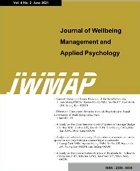- 권한신청
- E-ISSN2586-6036
- KCI
Extraction of Motor Modules by Autoencoder to Identify Trained Motor Control Ability
Abstract
Purpose: This pilot study aimed to clarify features of motor module during walking in exercise experts who experienced lately repeated training for sports skill. To identify motor modules, autoencoder machine learning algorithm was used, and modules were extracted from muscle activities of lower extremities. Research design, data and methodology: A total of 10 university students were participated. 5 students did not experience any sports training before, and 5 students did experience sports training more than 5 years. Eight muscle activities of dominant lower extremity were measured. After modules were extracted by autoencoder, the numbers of modules and spatial muscle weight values were compared between two groups. Results: There was no significant difference in the minimal number of motor modules that explain more than 90% of original data between groups. However, in similarity analysis, three motor modules were shown high similarity (r>0.8) while one module was shown low similarity (r<0.5). Conclusions: This study found not only common motor modules between exercise novice and expert during walking, but also found that a specific motor module, which would be associated with high motor control ability to distinguish the level of motor performance in the field of sports.
- keywords
- Autoencoder, Exercise experts, Machine learning, Motor module, Walking, Sports
- 다운로드 수
- 조회수
- 0KCI 피인용수
- 0WOS 피인용수














